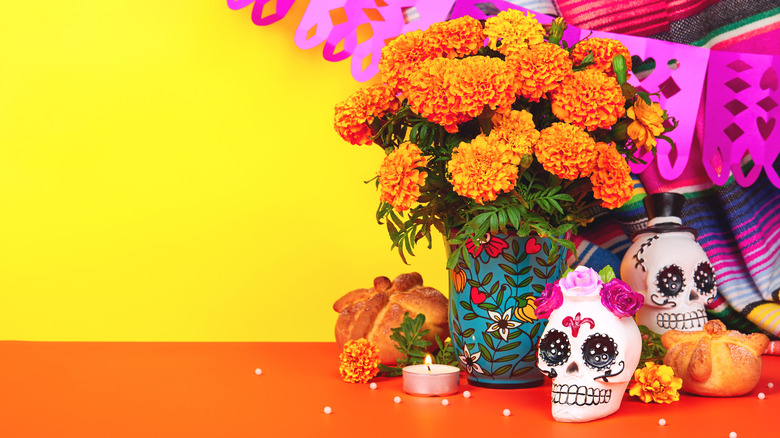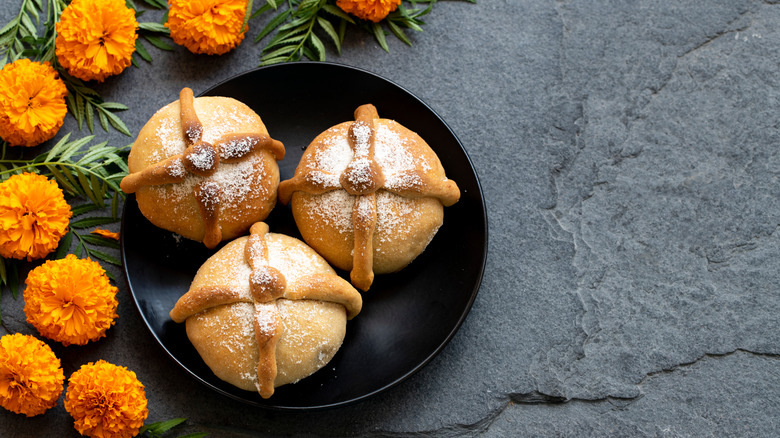The Traditional Breakfast Enjoyed For Día De Los Muertos
There's more to Halloween than trick-or-treat, glowing jack-o-lanterns, and spooky graveyard tours. The quirky holiday we celebrate on October 31 has roots that reach far and wide. According to History.com, Halloween as we know it in the United States is just a glimpse into the way people around the world observe the time of year when tradition says the veil between the living and dead is at its thinnest (via The Old Farmer's Almanac), easing communication with the other side. In Mexico, their annual celebration of Día de los Muertos — The Day of the Dead — takes place from October 31 to November 2 (via History.com).
While it's similar to Halloween in that costumes are involved, Día de los Muertos is more of a reunion than a scarefest. Revelers believe it's the time of year when the spirits of their deceased loved ones can return home to visit their living relatives who welcome them with food and drink (via History.com). Tradition says the gateway opens on October 31 when the spirits of deceased children can cross over for 24 hours. The spirits of deceased adults, meanwhile, are believed to arrive on November 2.
The living set out elaborate altars to guide the spirits home, tempting them with family memorabilia and special foods including pan de muertos — the bread of the dead.
A feast for the dead and breakfast for the living
While recipes vary by region, traditional pan de muertos is usually a blend of water (or milk), butter, anise seeds, sugar, flour, and orange flower water (via Food & Wine). Although the ingredients are simple, making just one loaf of bread can take up to six hours. The finished product is full of symbolism. For example, the mounds of dough stretched over the top of the bread are meant to symbolize the bones of the deceased. The author of an article in Food52, a pastry school alum, described pan de muerto as "traditional and insanely yummy" with "delicate flavors of anise and orange that also make it smell particularly fantastic during and after baking."
The bread is traditionally coated with a fine layer of sugar while it's still warm from the oven (via Food 52). As the celebration begins, a loaf of pan de muertos is placed on a dedicated ofrenda, or altar, along with family photos, plates of the deceased favorite foods, sugar skulls, and flowers (via Food & Wine). According to The New York Times, pan de muertos is said to lose its scent and flavor overnight, signifying the deceased have enjoyed their welcome feast. Food52, however, says the day-old bread makes great toast and even better French Toast, and Food & Wine claims it's traditionally eaten by the living for breakfast, along with hot chocolate or coffee.

